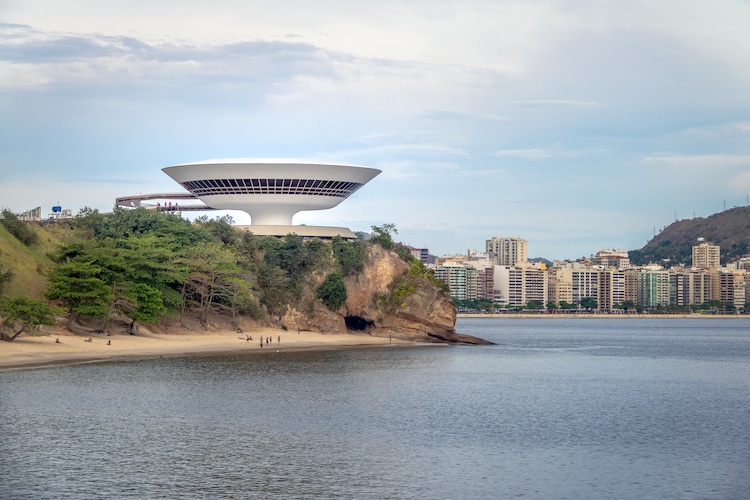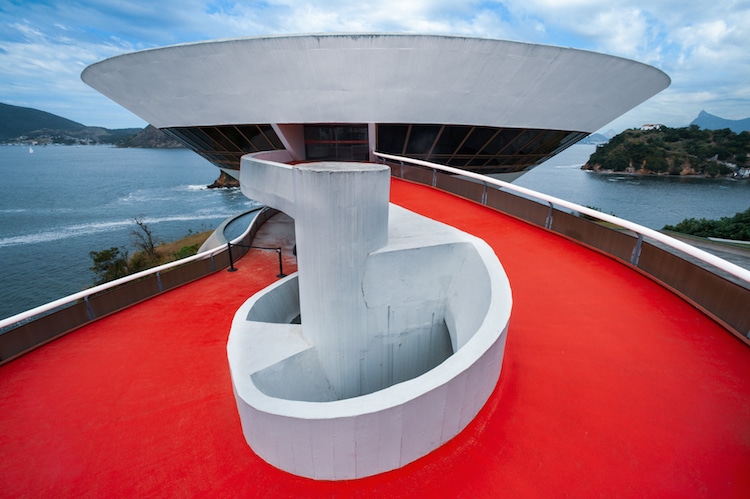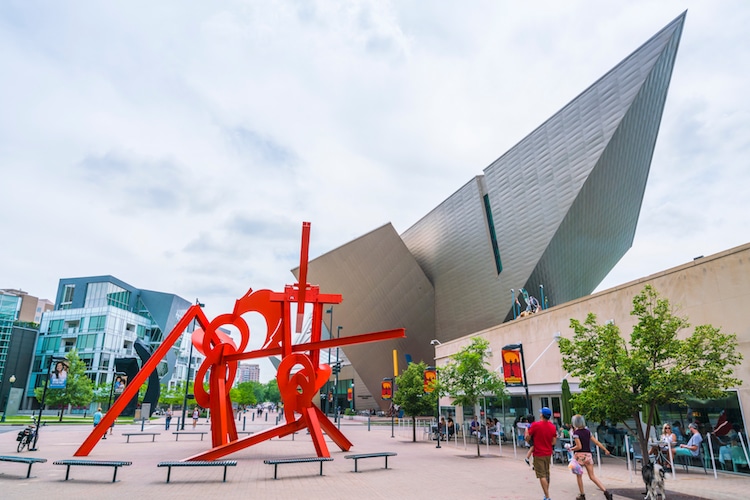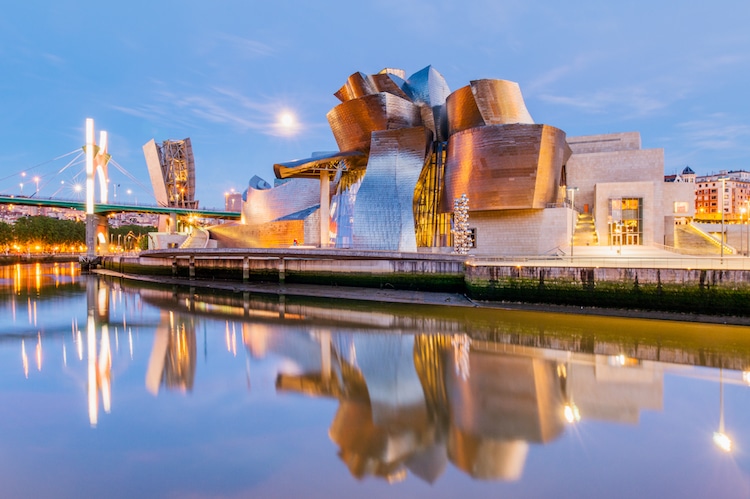More Museums with Iconic Architecture
Niterói Contemporary Art Museum

The Niterói Contemporary Art Museum (Photo: Diego Grandi via Shutterstock)
The Niterói Contemporary Art Museum is one of Rio’s most popular tourist destinations. A floating, saucer-shaped structure accessible by a large outdoor ramp and flanked by a flower-inspired reflecting pool, the museum is one of Oscar Niemeyer‘s most celebrated creations.
Known as the “Picasso of concrete,” Niemeyer is a pioneer of modern architecture and a master of abstraction. He is particularly fascinated by forms found in nature. “I am not attracted to straight angles or to the straight line, hard and inflexible, created by man. I am attracted to free-flowing, sensual curves. The curves that I find in the mountains of my country, in the sinuousness of its rivers, in the waves of the ocean, and on the body of the beloved woman. Curves make up the entire Universe, the curved Universe of Einstein.”

The Niterói Contemporary Art Museum entrance (Photo: Nick Albi via Shutterstock)
The out-of-this-world white concrete structure was completed in 1996 after five years of construction.
The Denver Art Museum

The Denver Art Museum (Photo: Checubus via Shutterstock)
The Denver Art Museum has an encyclopedic collection that spans cultures and centuries. However, the architecture of its main edifice, the Frederic C. Hamilton Building, is wildly contemporary.
The deconstructivist building was designed by Polish-American architect Daniel Libeskind and completed in 2006 . The shard-like structure features 20 topsy-turvy planes made out of titanium and steel. As these planes interact with each other, an abstract landscape forms.

The Denver Art Museum entrance (Photo: Checubus via Shutterstock)
Libeskind explains that this nature-esque aesthetic is intentional, as he was “inspired by the light and geology of the Rockies.” Additionally, the distinctive design was influenced by the museum’s community, as he notes that another muse was “the wide-open faces of the people of Denver.”
Pompidou Center

The Pompidou (Photo: Charles Leonard via Shutterstock)
The Georges Pompidou Center is Paris’ premiere destination for 20th-century art. The museum houses Europe’s largest collection of modern art, making its avant-garde architecture a perfect fit.
The museum was conceived by Renzo Piano, who was awarded the commission after winning an architectural design competition in 1971. His design featured an “exposed” exterior that reveals its inner workings in a whimsical arrangement of coded color: blue hues designate air conditioning, yellow is for electrical circulation, water pipes are green, and escalators and elevators are red.

The Pompidou (Photo: Silverbackstock via Shutterstock)
This unique approach turns the concept of the traditional museum building inside out—literally.
“On the Piazza side, and outside the usable volume, all public movement facilities have been centrifuged,” Piano said. “On the opposite side, all the technical equipment and pipelines have been centrifuged. Each floor is thus completely free and it can be used for all forms of cultural activities—both known and yet to be discovered.”
The Guggenheim Museum Bilbao

The Guggenheim Bilbao (Photo: Rudy Mareel via Shutterstock)
In 1991, the Basque government and the Solomon R. Guggenheim Foundation announced plans to build a new Guggenheim Museum along the Port of Bilbao.
Architect Frank Gehry was selected to design the building. Looking to the the local landscape for inspiration, Gehry imagined an undulating exterior that frames a flower-shaped atrium with views of the Basque hills. Furthermore, the materials used—including glass, stone, and titanium—and its deconstructed aesthetic fit in perfectly with the museum’s industrial surroundings.

The Guggenheim Bilbao (Photo: Manuel Ascanio via Shutterstock)
Since opening to the public in 1997, the museum has garnered praise across the board. “The building blazed new trails and became an extraordinary phenomenon,” art critic Paul Goldberger said in 2009. “It was one of those rare moments when critics, academics, and the general public were all completely united about something.”
Related Articles:
20 of the World’s Most Famous Museums Offering Free Museum Days
8 Amazing Hotels Around the World That Double as Art Museums
10+ Museums That Will Let You Spend the Night for a One-of-a-Kind Sleepover
